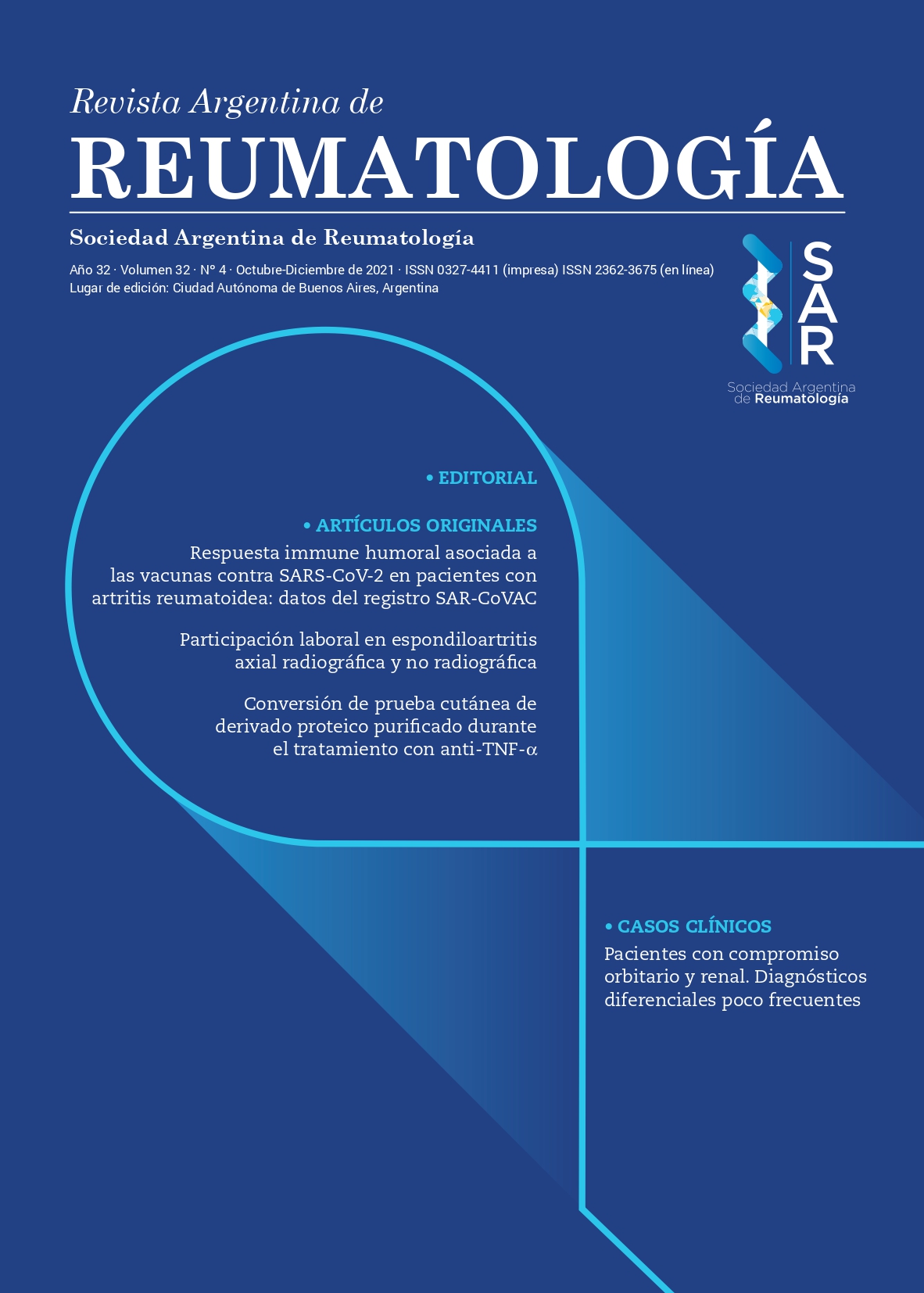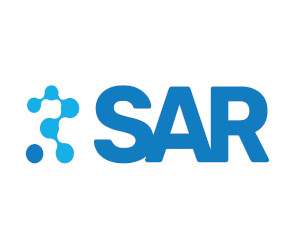Uso de la marihuana medicinal en enfermedades reumáticas
Resumen
La marihuana medicinal ha sido propuesta en los últimos años como una solución a algunos problemas médicos refractarios a otros tratamientos. En este trabajo se realiza una breve revisión desde la historia moderna de los cannabinoides y la farmacología del THC, hasta la evidencia actual de la utilidad de estas sustancias en las enfermedades reumáticas.Citas
II. Lindgren JE, ohlsson A, Agurell S, Hollister L, gillespie H. Clinical effects and plasma levels of delta 9-tetrahydrocannabinol (delta 9-THC) in heavy and light users of cannabis. Psychopharmacology 1981; 74:208-12.
III. Ramos Atance JA, Fernández Ruiz J. Cannabinoides: propiedades químicas y aspectos metabólicos. Adicciones 2000; 12 (supl 2):41-56.
IV. Grotenhermen F. Pharmacokinetics and pharmacodynamics of cannabinoids. Clin Pharmacokinet 2003; 42:327-60.
V. Williamson EM, Evans F. Cannabinoids in clinical practice. Drugs 2000; 60:1303-14.
VI. Ashton CH. Adverse effects of cannabis and cannabinoids. Br J Anaesth 1999; 83:637-49.
VII. Martín BR, Dewey WL, Harris LS, Belckner JS. Delta-9-tetrahydrocannabinol tissue and subcellular distribution in the central nervous system and tissue distribution in peripheral organs of tolerant and nontolerant dogs. J Pharmacol Exp Ther 1976; 196:128-44.
VIII. Fernandez-Ruiz JJ, Rodríguez F, Navarro M, Ramos JA. Maternal cannabinoid exposure and brain development: changes in the ontogeny of dopamine neurons: Bartke A, Murphy LL (eds). Marihuana/cannabinoids: neurobiology and neurophysiology. Biochemistry and physiology of substance abuse: CRC Press 1992; 4:119-64.
IX. Matsuda LA, Lolait SJ, Brownstein MJ, Young AC, Bonner TI. Structure of a cannabinoid receptor and functional expression of the cloned cDNA. Nature 1990; 346:561-64.
X. Pertwee Rg. Pharmacology of cannabinoid CB1 and CB2 receptors. Pharmacol Ther 1997; 74:129-80.
XI. Munro S, Thomas KL, Abu-Shaar M. Molecular characterisation of peripheral receptor for cannabinoids. Nature 1993; 365:61-65.
XII. Pertwee Rg. Cannabinoid receptors and pain. Progress in Neurobiology 2001; 63:569-611.
XIII. Pertwee Rg. Pharmacology of cannabinoid receptor ligands. Curr Med Chem 1999; 6:635-64.
XIV. Mechoulam R, Ben Shabat S, Hanus L, Fride E, vogel Z, Bayewitch M et al. Endogenous cannabinoid ligandschemical and biological studies. J Lipid Mediat Cell Signal 1996; 14:45-49.
XV. Mechoulam R, Ben-Shabat S, Hanus L, Ligumsky M, Kaminski NE, Schatz AR et al. Identification of an endogenous 2-mono-glyceride, present in canine gut, that binds to cannabinoid receptors. Biochem Pharmacol 1995; 50:83-90.
XVI. Hanus L, Abu-Lafi S, Fride E, Breuer A, vogel Z, Shalev DE et al. 2-arachidonil gliceril eter, an endogenous agonist of the cannabinoid CB1 receptor. Proc Natl Acad Sci uSA 2000; 98:3662-35.
XVII. Perz-Reyes M. The psychologic and physiologic effects of active cannabinoids. A: Nahas g, Sutin KM, Harvey DJ, Agurell S (eds), Marihuana and medicine. Totowa, NJ: Humana Press, 1999:245-52.
XVIII. Dewey WL. Cannabinoid pharmacology. Pharmacol Rev 1986; 38:151-78.
XIX. Kirby MT, Hampson RE, Deadwyler SA. Cannabinoids selectively decrease paired-pulse facilitation of perforant path synaptic potentials in the dentate gyrus
in vitro. Brain Res 1995; 688:114-20.
XX. Nakamura EM, Da Silva EA, Concilio gv, Wilkinson DA, Masur J. Reversible effects of acute and long-term administration of delta9- tetrahydrocannabinol on memory in the rat. Drug Alcohol Depend 1991; 28:167-75.
XXI. Reibaud M, obinu MC, Ledent C, Parmentier M, Böhme gA, Imperato A. Enhancement of memory in cannabinoid CB1 receptor knockout mice. Eur J Pharmacol 1999; 379:R1-R2.
XXII. Marsiciano g. The endogenous cannabinoid system controls extinction of aversive memories. Nature 2002; 418:530-34.
XXIII. Pertwee Rg, Wickens AP. Enhancement by chlordiazepoxide of catalepsy induced in rats by intravenous or intrapallidal injections of enantiomeric cannabinoids. Neuropharmacology 1991; 30:237-44.
XXIV. Ramaekers Jg, Berghaus g, van Laar M, Drummer oH. Dose related risk of motor vehicle crashes after cannabis use. Drug Alcohol Depend 2004; 73:109-19.
XXV. Drummer oH, gerostamoulos J, Batzirs H, Chu M, Caplehorn J, Robertsn MD, Swann P. The involvement of drugs in drivers of motor vehicles killed in Australian road traffic crashes. Accid Anal Prev 2004; 36:239-48.
XXVI. Bates MN, Blakey TA. Role of cannabis in motor vehicle crashes. Epidemiol Rev 1999; 21:222-32.
XXVII. Longo MC, Hunter CE, Lokan RJ, White JM, White MA. The prevalence of alcohol, cannabinoids, benzodiazepines and stimulants amongst injured drivers and their
role in driver culpability. Part II: the relation between drug prevalence and drug concentration, and driver culpability. Accid Anal Prev 2000; 32:623-32.
XXVIII. Van Sickle MD, oland LD, Ho W, Hillard CJ, Mackie K, Davison JS et al. Cannabinoids inhibit emesis through CB1 receptors in the brainstem of the ferret. gastroenterology 2001; 121:767-74.
XXIX. Fan P. Cannabinoid agonists inhibit the activation of 5-HT3 receptors in rat nodose ganglion neurons. J Neurophysiol 1995; 73:907-10.
XXX. Parker AL, Mechoulam R, Schlievert C. Cannabidiol, a non-psychoactive component of cannabis and its synthetic dimethylheptyl homolog suppress nausea in an experimental model with rats. Neuroreport 2002; 13:567-70.
XXXI. Parker LA, Mechoulam R, Schlievert C, Abbott L, Fudge ML, Burton P. Effects of cannabinoids on lithiuminduced conditioned rejection reactions in a rat model of nausea. Psychopharmacology 2003; 166:156-62.
XXXII. Parker LA, Kwiatkowska M, Burton P, Mechoulam R. Effect of cannabinoids on lithium-induced vomiting in the Suncus murinus (house musk shrew). Psychopharmacology 2004;171:156-61.
XXXIII. Kwiatkowska M, Parker LA, Burton P, Mechoulam R. A comparative analysis of the potential of cannabinoids and ondansetron to suppress cisplatin-induced emesis in the Suncus murinus. Psychopharmacolgy 2004.
XXXIV. Fitzcharles MA, Baerwald C, Ablin J, Häuser W. Efficacy, tolerability and safety of cannabinoids in chronic pain associated with rheumatic diseases (fibromyalgia syndrome, back pain, osteoarthritis, rheumatoid arthritis): A systematic review of randomized controlled trials. Schmerz. 2016 Feb;30(1):47-61. doi: 10.1007/s00482-015-0084-3.
XXXV. Fitzcharles MA, Ste-Marie PA, Häuser W, Clauw DJ, Jamal S, Karsh J, Landry T, Leclercq S, Mcdougall JJ, Shir Y, Shojania K, Walsh Z. Efficacy, Tolerability, and Safety of Cannabinoid Treatments in the Rheumatic Diseases: A Systematic Review of Randomized Controlled Trials. Arthritis Care Res (Hoboken). 2016 May;68(5):681-8. doi: 10.1002/acr.22727.
XXXVI. Walitt B, Klose P, Fitzcharles MA, Phillips T, Häuser W. Cannabinoids for fibromyalgia. Cochrane Database Syst Rev. 2016 Jul 18;7:CD011694. doi:10.1002/14651858. CD011694.pub2.
Derechos de autor 2015 A nombre de los autores. Derechos de reproducción: Sociedad Argentina de Reumatología

Esta obra está bajo licencia internacional Creative Commons Reconocimiento-NoComercial-SinObrasDerivadas 4.0.






